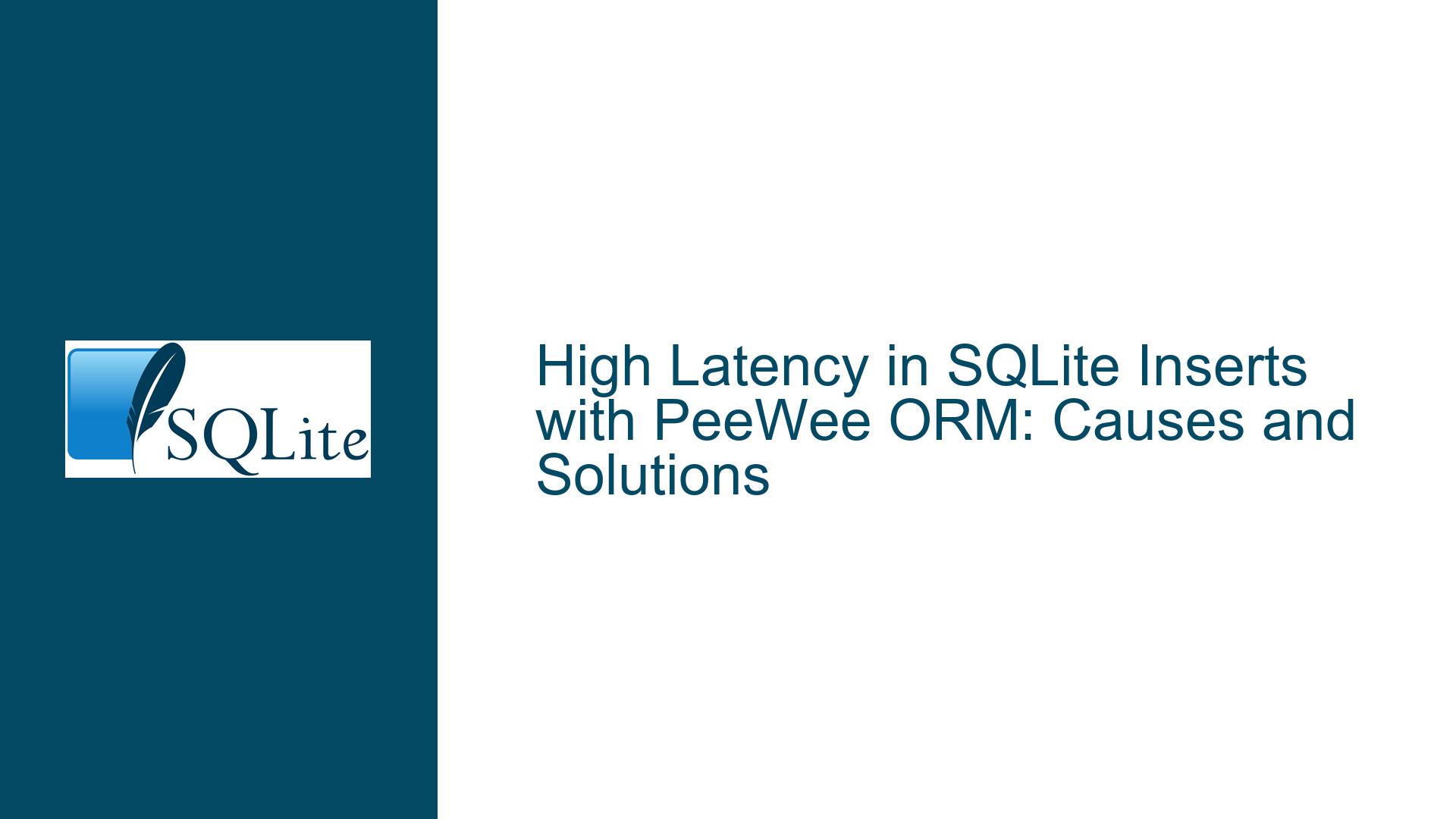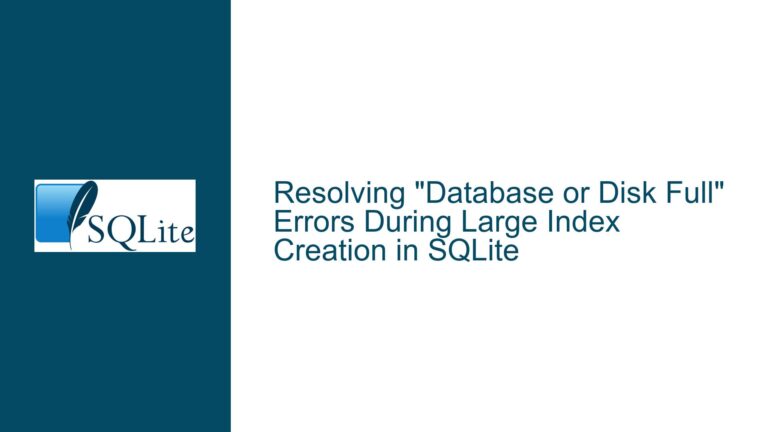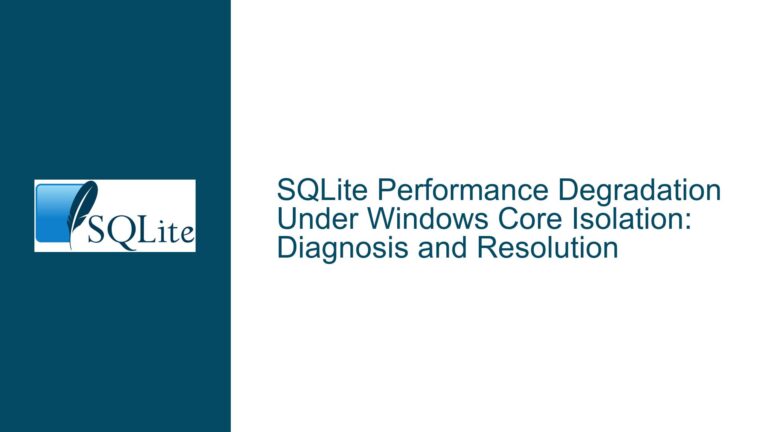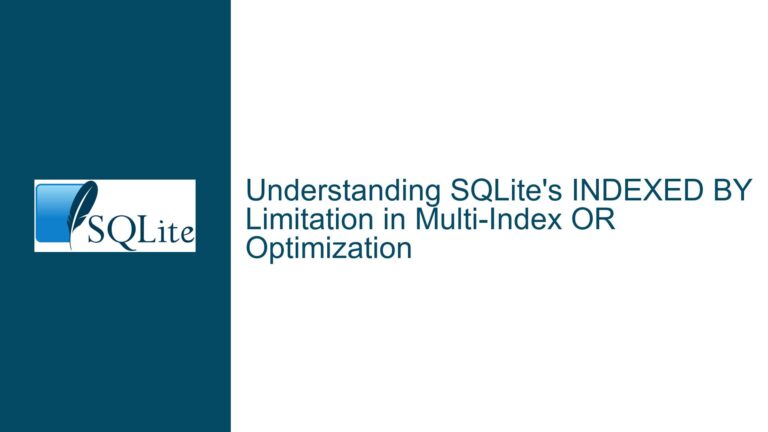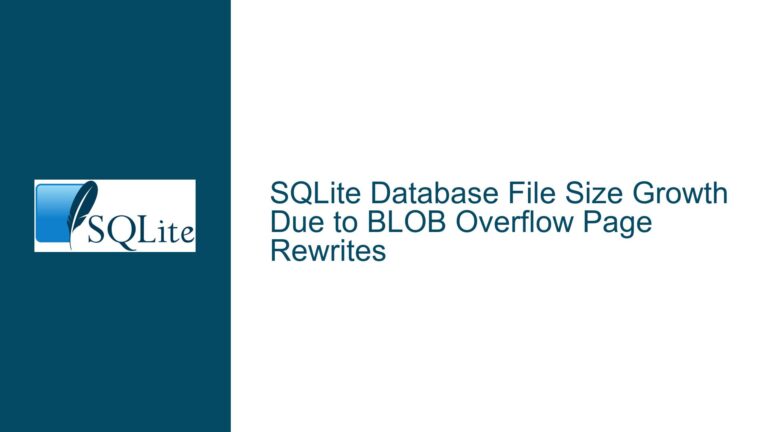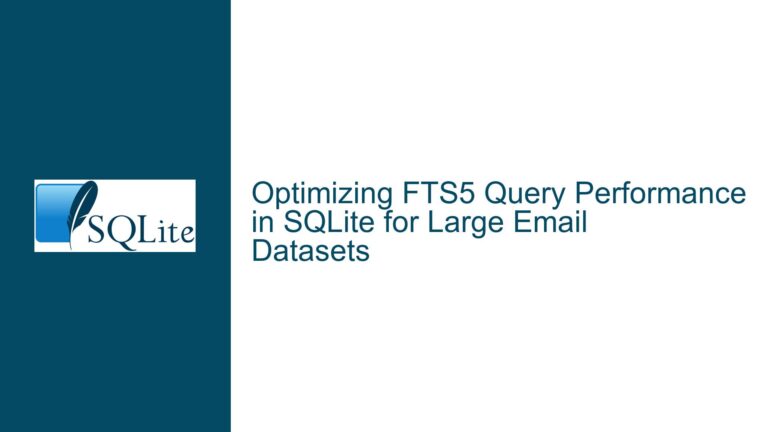High Latency in SQLite Inserts with PeeWee ORM: Causes and Solutions
Understanding the Sudden Spike in Insert Latency
The core issue revolves around the unexpected increase in latency during SQLite insert operations when using the PeeWee ORM in a Python application. The application is designed to record GPS information from frames captured by OpenCV, with the data being stored in an SQLite database. Under normal conditions, the insert operations take less than 8 milliseconds. However, occasionally, the latency spikes to over 100 milliseconds, and in some cases, even reaches 274 milliseconds. This behavior is sporadic and does not follow a predictable pattern, making it challenging to diagnose.
The application is running on an Nvidia AGX Orin, which is a powerful embedded system, and the storage device is an NVMe SSD, which should theoretically provide fast I/O operations. The database is configured with specific pragmas to optimize performance, including enabling Write-Ahead Logging (WAL) mode, setting a large page size (32KB), and configuring a cache size of 64MB. Despite these optimizations, the latency spikes persist, suggesting that the issue may be related to the interaction between the database configuration, the hardware, and the PeeWee ORM.
Potential Causes of the Latency Spikes
Several factors could contribute to the observed latency spikes in the SQLite insert operations. One of the primary suspects is the interaction between the WAL mode and the checkpointing mechanism. In WAL mode, SQLite writes changes to a separate WAL file instead of directly modifying the main database file. Periodically, SQLite performs a checkpoint operation to transfer the changes from the WAL file back to the main database file. If the WAL file grows too large, the checkpoint operation can become time-consuming, leading to increased latency during inserts.
Another potential cause is the cache size configuration. The database is configured with a cache size of 64MB, which may be insufficient given the large page size of 32KB. A smaller cache size can lead to more frequent cache misses, forcing SQLite to read data from the disk more often, which can increase latency. Additionally, the NVMe SSD, while fast, may have performance characteristics that interact poorly with the database’s I/O patterns, especially under heavy load.
The PeeWee ORM itself could also be a contributing factor. ORMs often introduce overhead due to the abstraction layer they provide. In this case, the force_insert=True parameter in the save method ensures that each insert operation is treated as a new record, which may lead to additional overhead, especially if the ORM is not optimized for bulk inserts or high-frequency single inserts.
Diagnosing and Resolving the Latency Issues
To address the latency spikes, a systematic approach is required to diagnose and resolve the underlying issues. The first step is to gather more detailed diagnostic information. This can be achieved by modifying the logging mechanism to capture the exact time each insert operation takes, along with the state of the database at that moment. This data can help identify patterns or specific conditions under which the latency spikes occur.
Once sufficient diagnostic data is collected, the next step is to experiment with different database configurations. Increasing the cache size could help reduce the frequency of cache misses, thereby improving performance. For example, increasing the cache size to 256MB or even 512MB might provide a noticeable improvement. Additionally, adjusting the WAL checkpoint threshold could help mitigate the impact of checkpoint operations on insert latency. SQLite allows configuring the WAL checkpoint threshold using the wal_autocheckpoint pragma. Setting this to a lower value could reduce the size of the WAL file and make checkpoint operations less intrusive.
Another approach is to optimize the PeeWee ORM usage. If the application frequently performs single inserts, it might be beneficial to batch multiple inserts together. PeeWee supports bulk inserts, which can significantly reduce the overhead associated with individual insert operations. Additionally, reviewing the ORM’s configuration and ensuring that it is optimized for the specific use case can help improve performance.
Finally, it is essential to consider the hardware and operating system configuration. Ensuring that the NVMe SSD is properly configured and that the operating system is optimized for high-performance I/O operations can help reduce latency. This includes checking the SSD’s firmware, ensuring that the file system is configured for performance, and verifying that the operating system’s I/O scheduler is appropriate for the workload.
In conclusion, the sudden latency spikes in SQLite insert operations when using the PeeWee ORM are likely due to a combination of factors, including WAL checkpointing, cache size, ORM overhead, and hardware configuration. By systematically diagnosing the issue and experimenting with different configurations, it is possible to identify and resolve the underlying causes, leading to more consistent and predictable performance.
